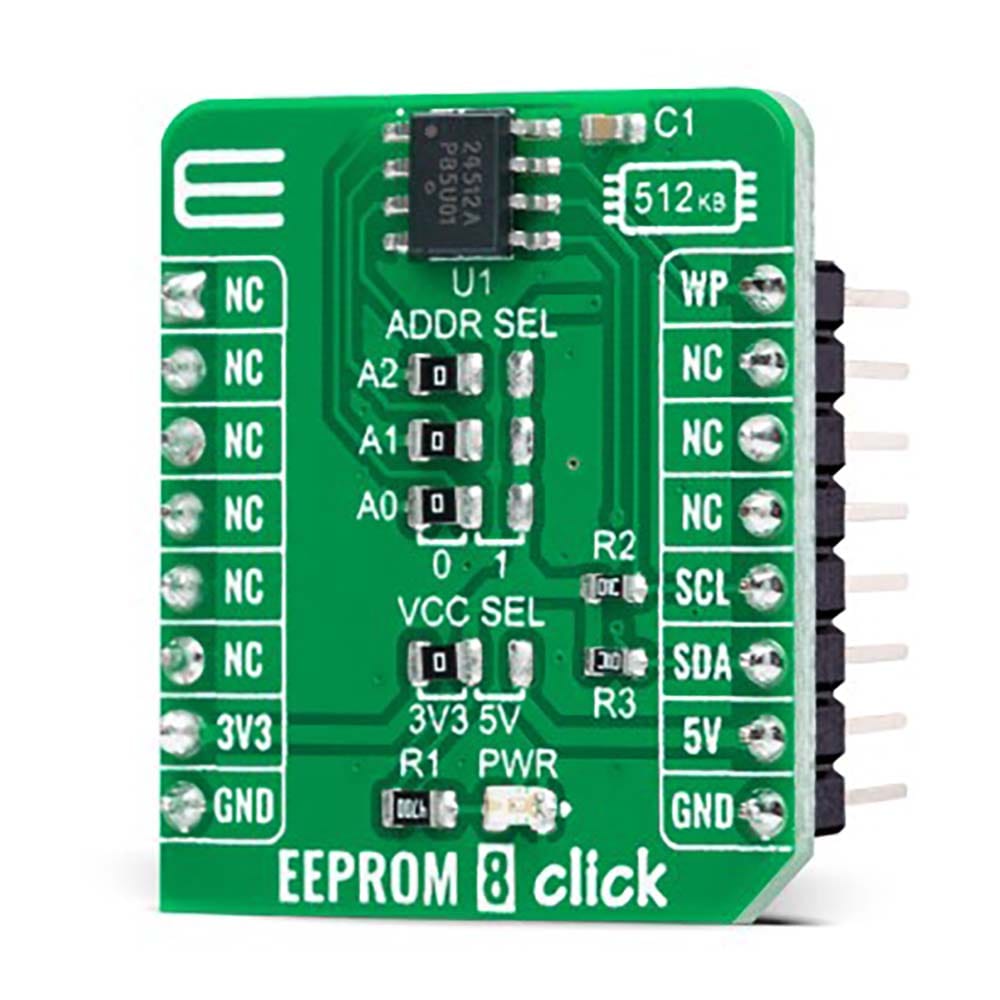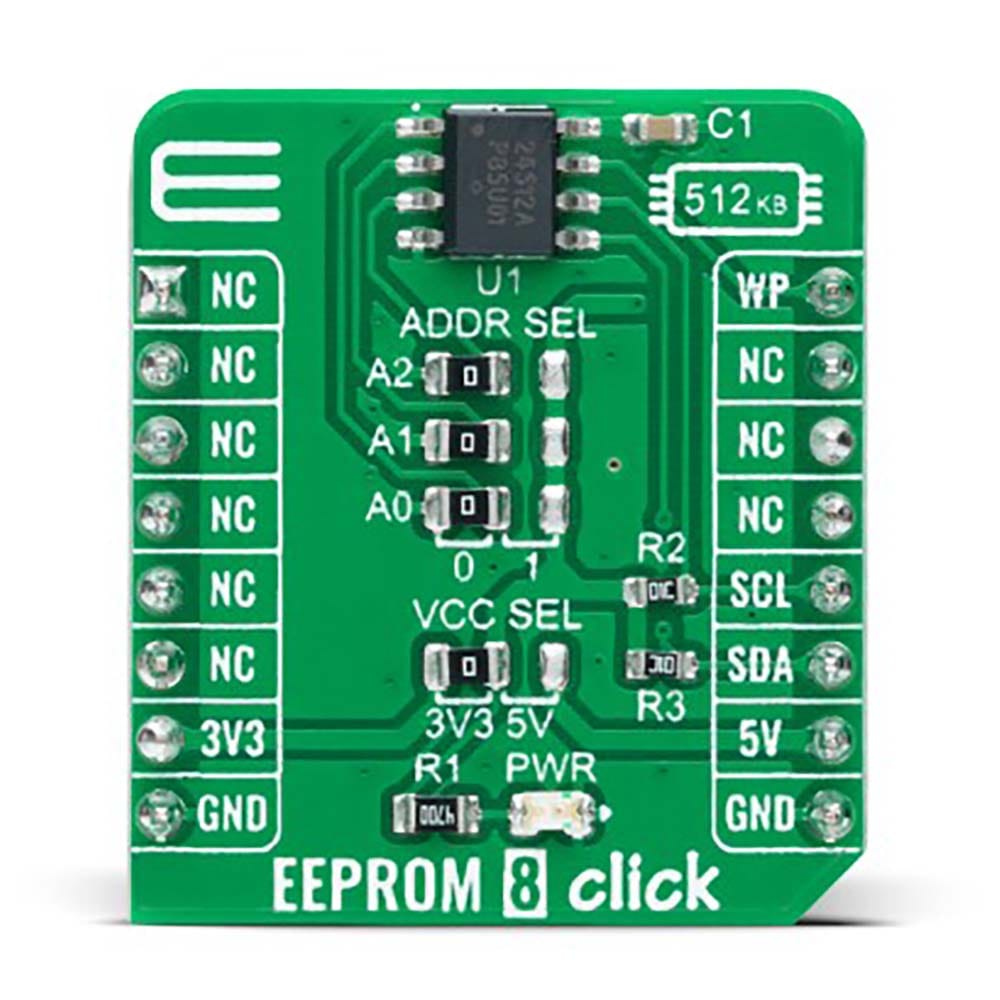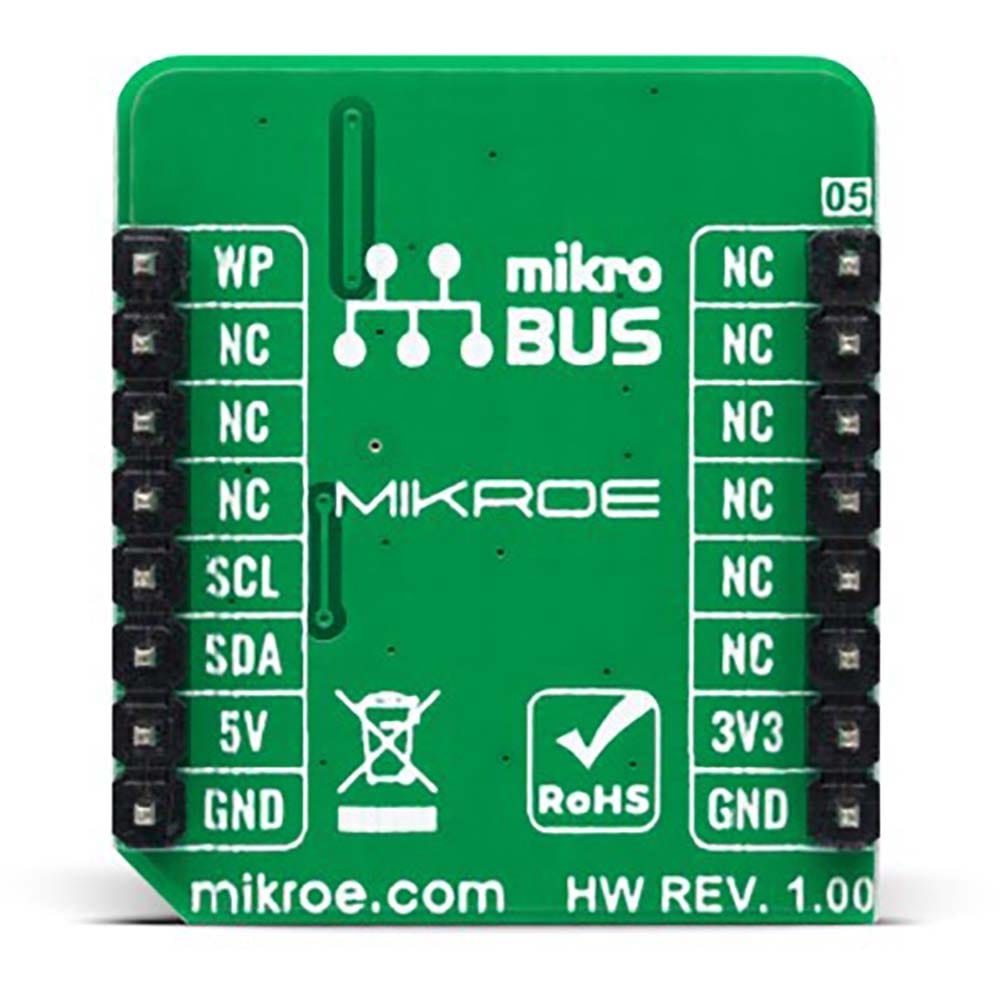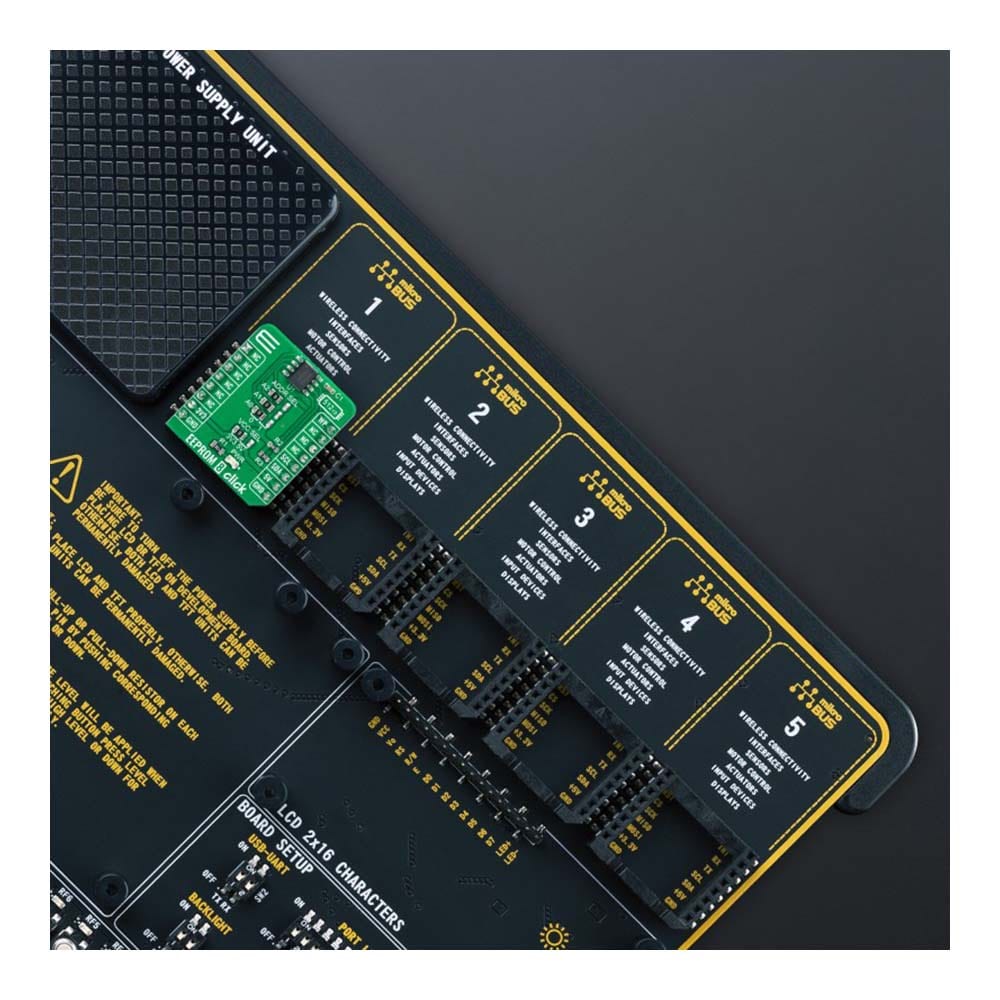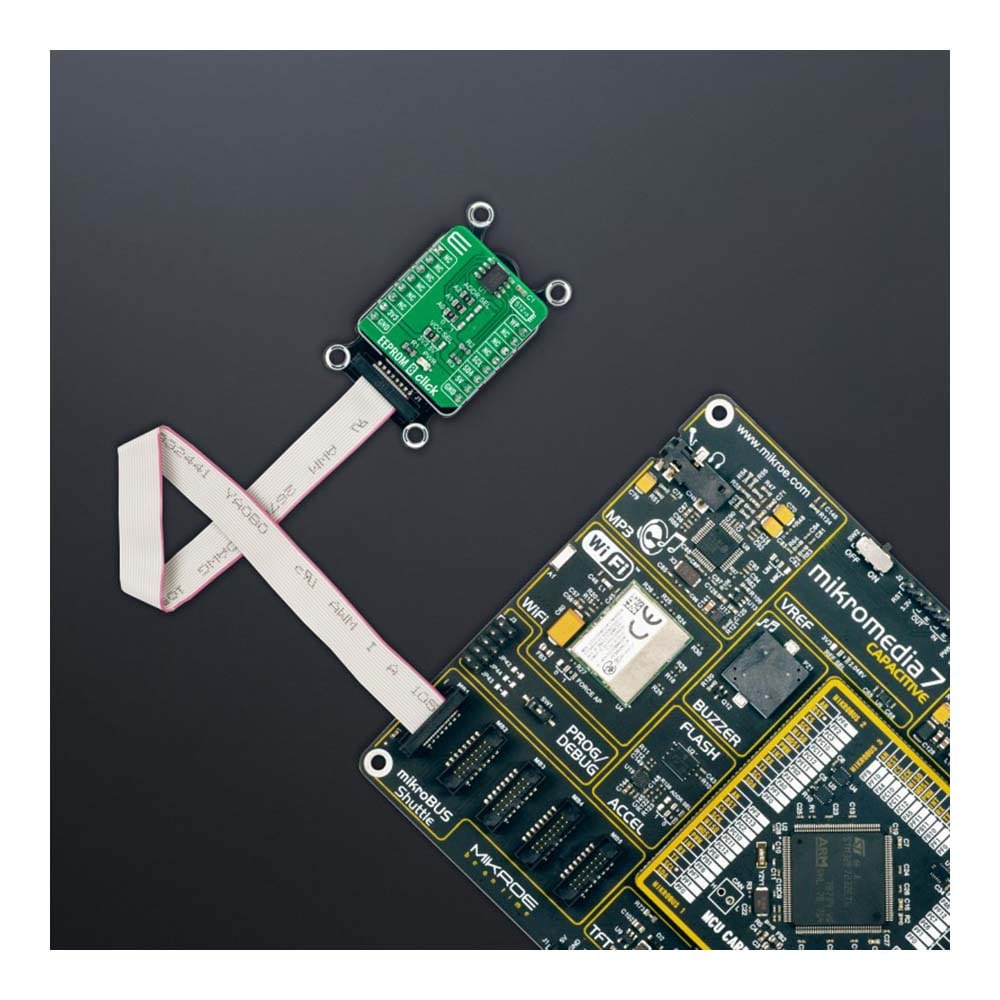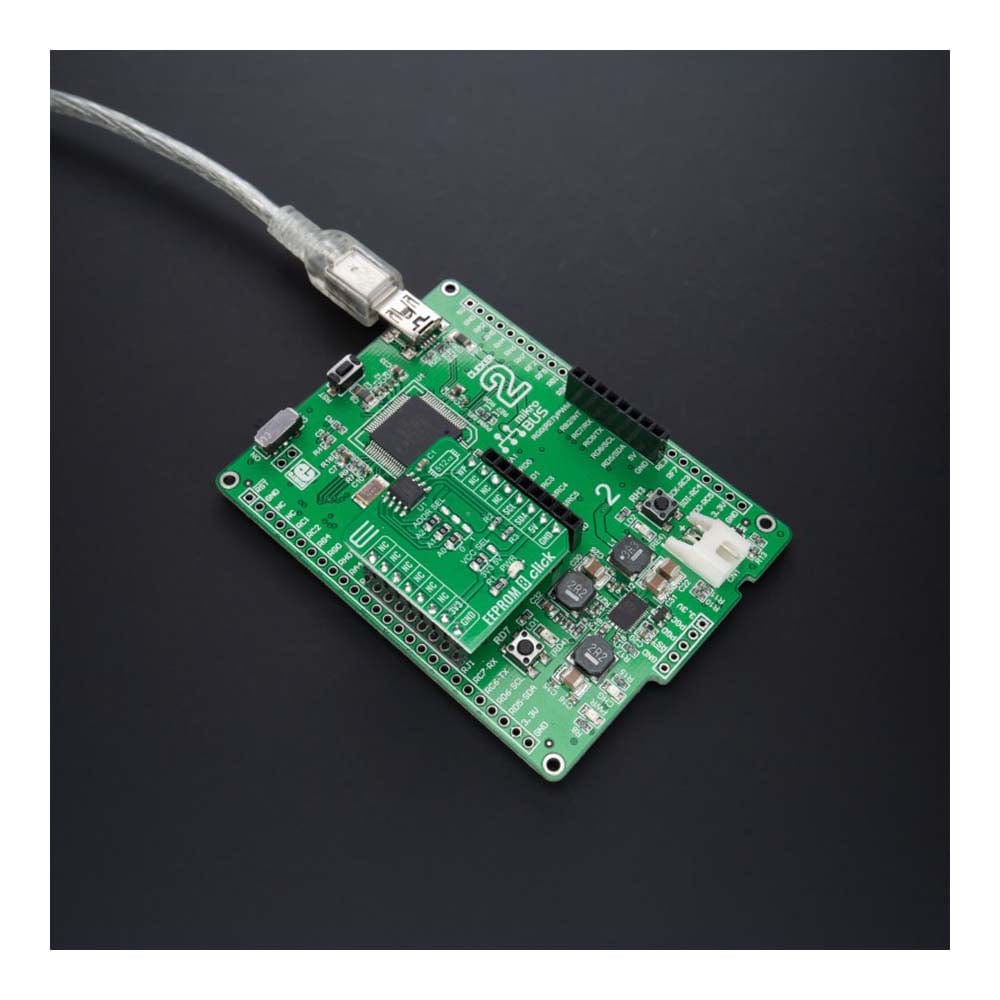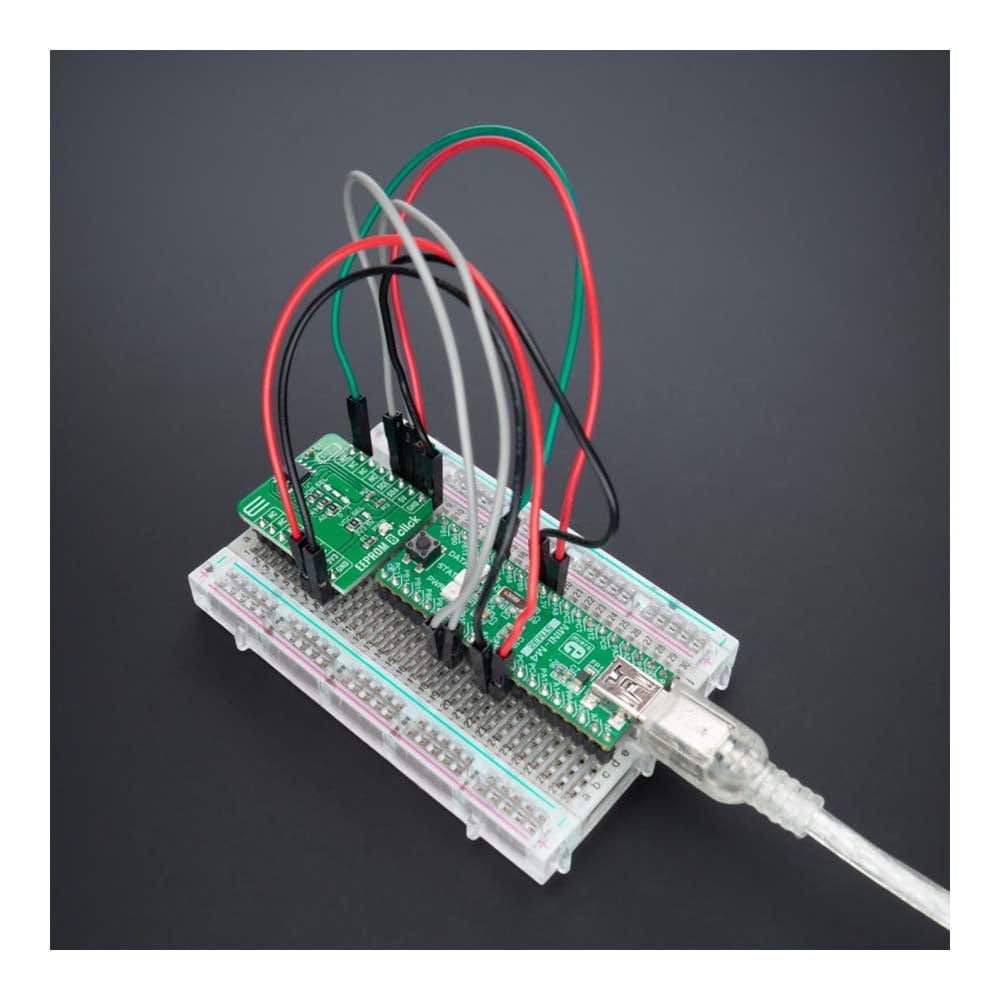
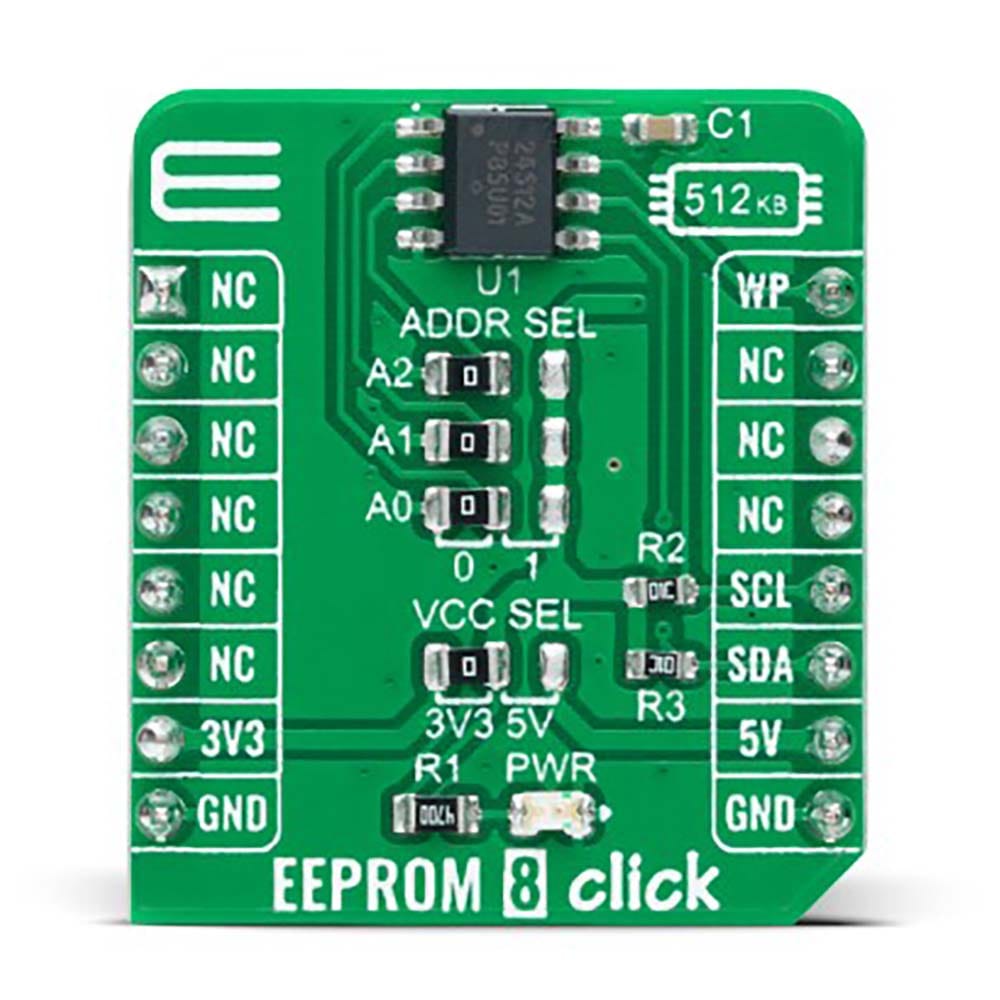
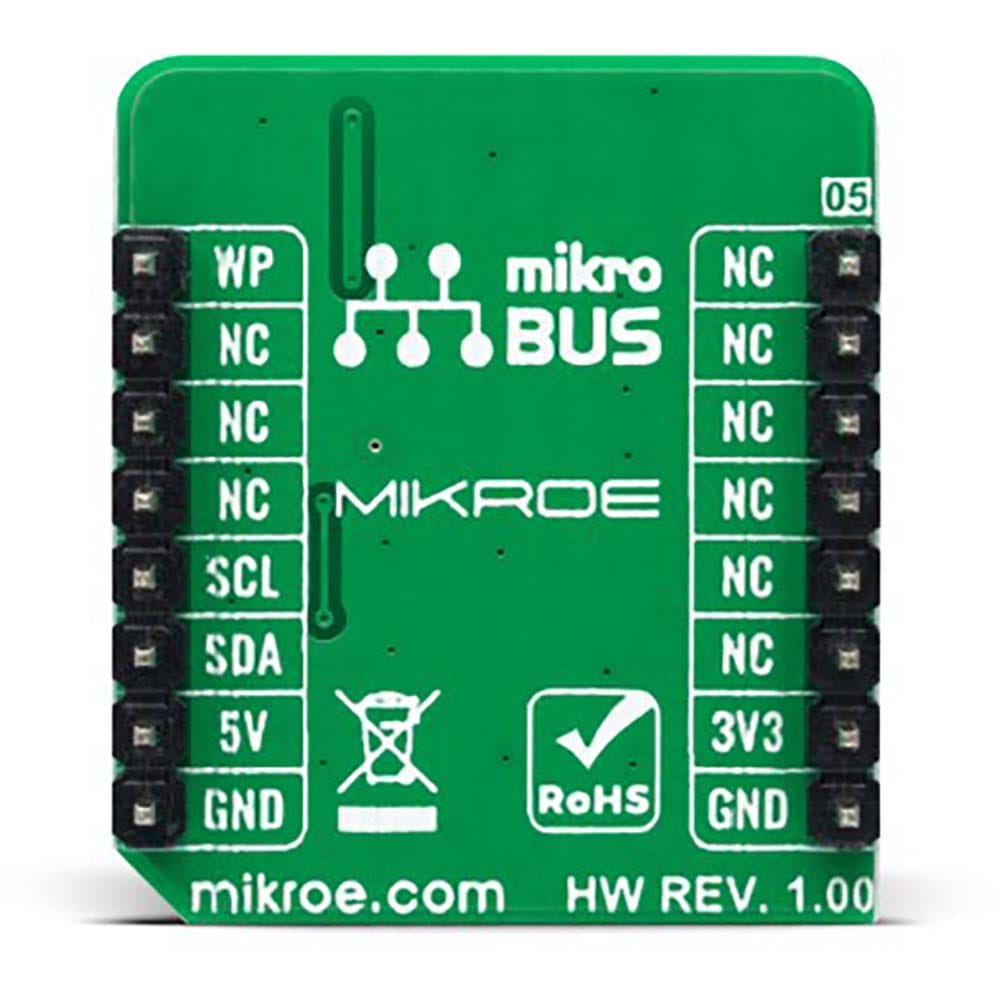
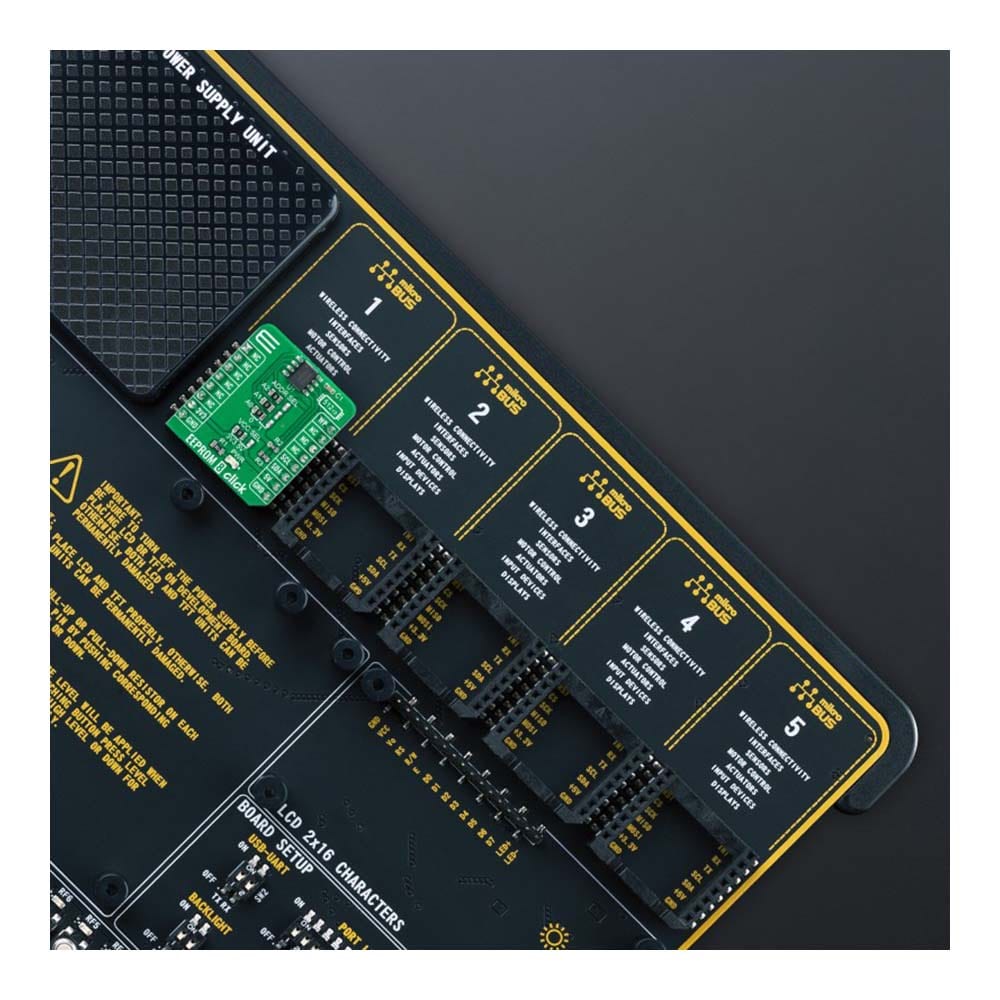
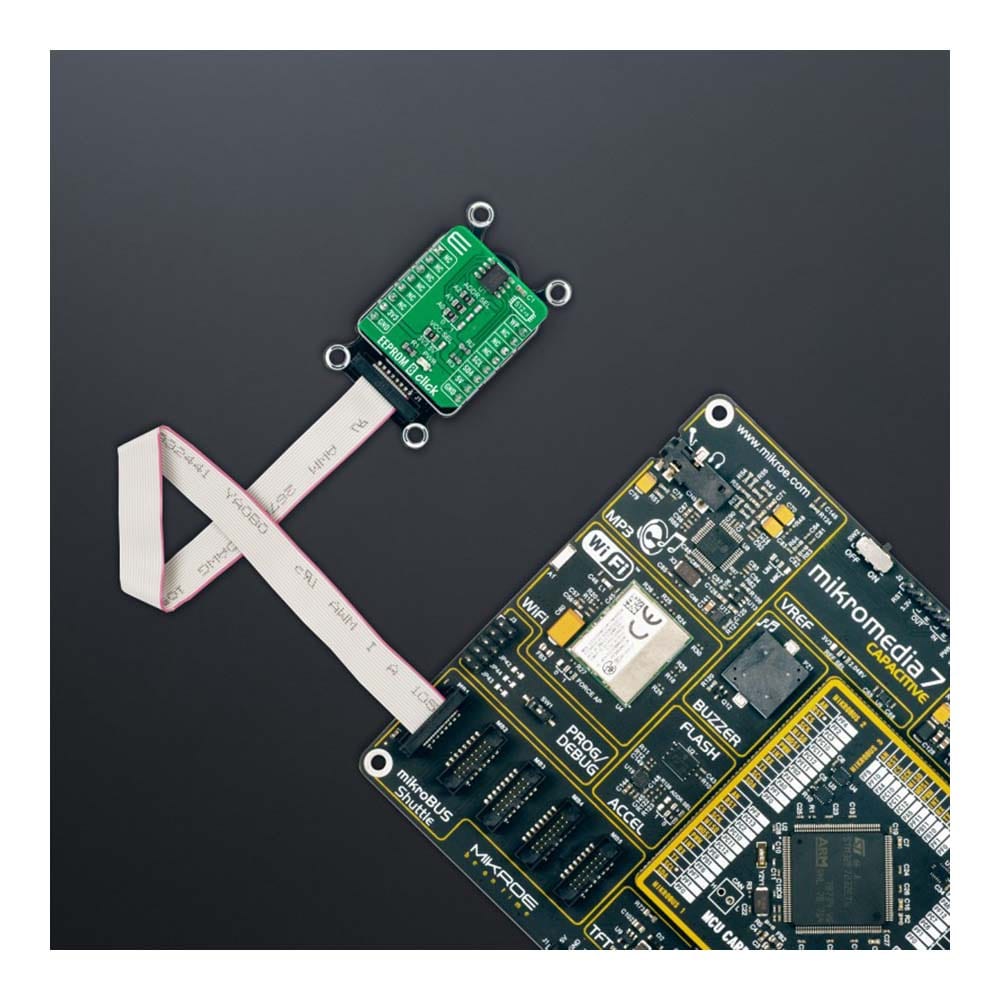
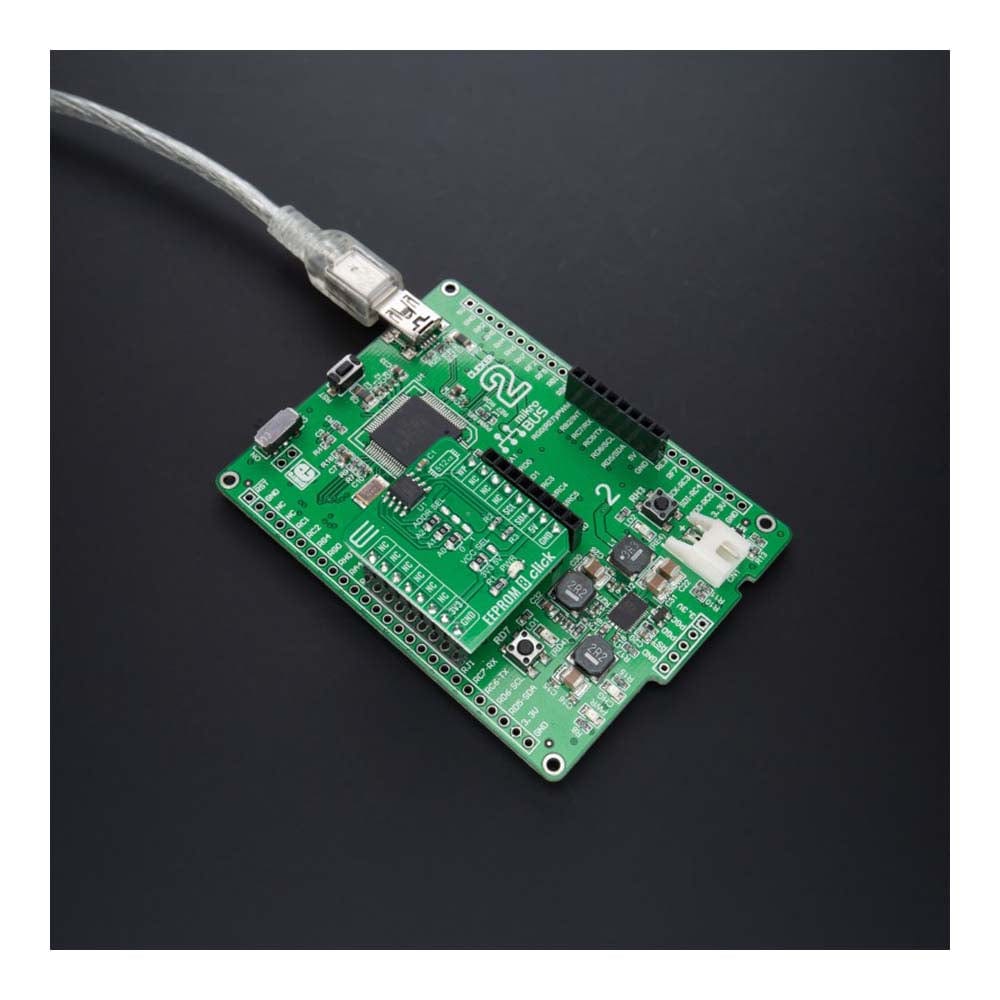
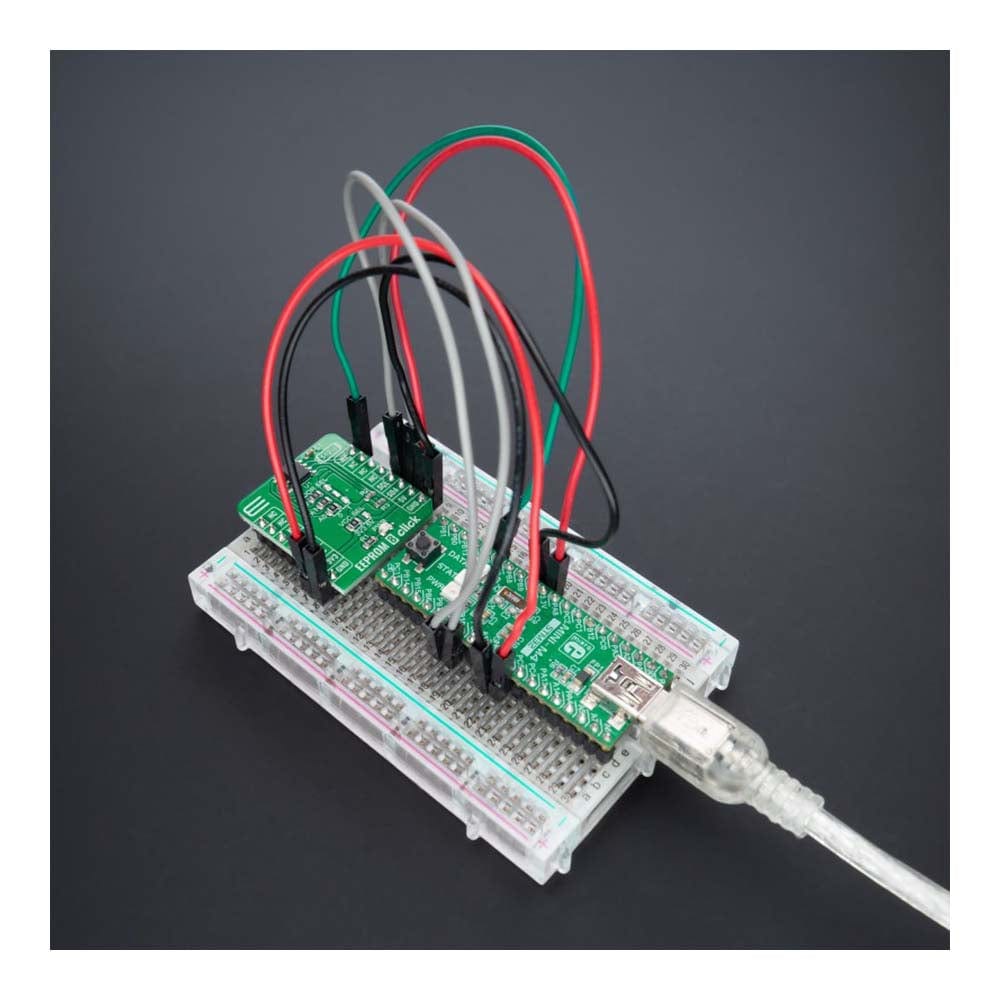
Key Features
Overview
The EEPROM 8 Click Board™ is a compact add-on board that contains a highly reliable nonvolatile memory solution. This board features the CAV24C512, a 512-Kb electrically erasable programmable memory with enhanced hardware write protection for entire memory from ON Semiconductor. Internally organized as 65,536 words of 8 bits each, the CAV24C512 comes up with the compatible I2C serial interface. The CAV24C512 combines unprecedented data storage with excellent energy efficiency. It lasts one million full-memory read/write/erase cycles with more than 100 years of data retention. This Click board™ is suitable for consumer and industrial applications where dependable nonvolatile memory storage is essential.
The EEPROM 8 Click Board™ is supported by a mikroSDK compliant library, which includes functions that simplify software development. This Click board™ comes as a fully tested product, ready to be used on a system equipped with the mikroBUS™ socket.
Downloads
Das EEPROM 8 Click Board™ ist eine kompakte Zusatzplatine, die eine äußerst zuverlässige nichtflüchtige Speicherlösung enthält. Diese Platine verfügt über den CAV24C512, einen 512 KB großen elektrisch löschbaren programmierbaren Speicher mit verbessertem Hardware-Schreibschutz für den gesamten Speicher von ON Semiconductor. Der CAV24C512 ist intern als 65.536 Wörter mit jeweils 8 Bit organisiert und verfügt über die kompatible serielle I2C-Schnittstelle. Der CAV24C512 kombiniert beispiellose Datenspeicherung mit ausgezeichneter Energieeffizienz. Er hält eine Million Lese-/Schreib-/Löschzyklen des gesamten Speichers mit mehr als 100 Jahren Datenspeicherung aus. Dieses Click Board™ ist für Verbraucher- und Industrieanwendungen geeignet, bei denen zuverlässiger nichtflüchtiger Speicher unerlässlich ist.
Das EEPROM 8 Click Board™ wird von einer mikroSDK-kompatiblen Bibliothek unterstützt, die Funktionen enthält, die die Softwareentwicklung vereinfachen. Dieses Click Board™ wird als vollständig getestetes Produkt geliefert und ist bereit für den Einsatz auf einem System, das mit der mikroBUS™-Buchse ausgestattet ist.
| General Information | |
|---|---|
Part Number (SKU) |
MIKROE-5073
|
Manufacturer |
|
| Physical and Mechanical | |
Weight |
0.02 kg
|
| Other | |
Country of Origin |
|
HS Code Customs Tariff code
|
|
EAN |
8606027388866
|
Warranty |
|
Frequently Asked Questions
Have a Question?
Be the first to ask a question about this.

